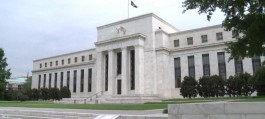Oil prices rose in early trading on Wednesday, on expectations that major producers will continue production cuts at the OPEC+ alliance meeting scheduled for Sunday, as well as expectations of increased fuel consumption with the start of the peak demand season in the summer.
price movement
Brent crude futures for July delivery rose 27 cents, or 0.3 percent, to $84.49 a barrel by 0042 GMT. U.S. West Texas Intermediate (WTI) crude futures for July were up 35 cents, or 0.4 percent, at $80.18.
Traders and analysts expect the OPEC+ alliance, which includes the Organization of the Petroleum Exporting Countries (OPEC) and its allies including Russia, to maintain voluntary production cuts totaling about 2.2 million barrels per day.
Monday, a national holiday to commemorate American war dead, marks the start of peak demand season in the United States, the world's biggest oil consumer. Maintaining production cuts could keep prices higher as consumption increases.
“Preliminary data suggests a relatively large number of holiday trips in the United States were taken over Memorial Day, the traditional start to the driving season. Air travel was also strong,” Daniel Hynes, chief commodity strategist at ANZ Bank, said in a note.
The intensification of fighting in the Gaza Strip provided some support to oil prices amid fears that the conflict could spread to other parts of the Middle East.
Investors are also awaiting data on U.S. crude inventories from the American Petroleum Institute, which will be released later on Wednesday. The data was delayed by a day due to a holiday on Monday.
A preliminary Reuters poll showed on Tuesday that U.S. crude oil inventories were expected to fall by about 1.9 million barrels last week.
Investors are also awaiting US inflation data this week, which could affect expectations of Federal Reserve interest rate cuts, which could be positive for oil prices.
The U.S. core PCE price index report for April, the central bank’s preferred measure of inflation, is due later this week. Inflation is expected to remain unchanged on a monthly basis.
Expectations about the timing of the rate cut have swung as policymakers worry that data continues to point to persistent inflation.







































